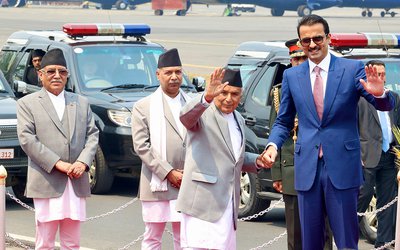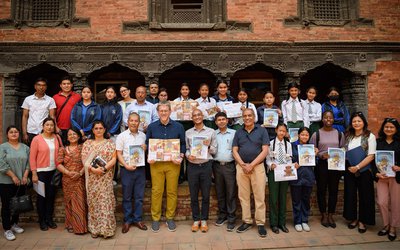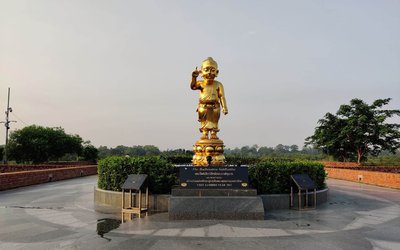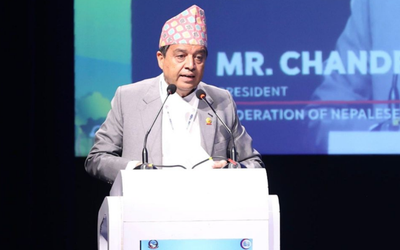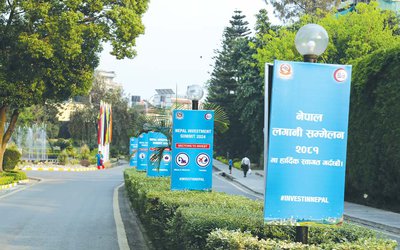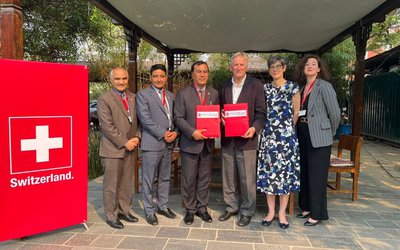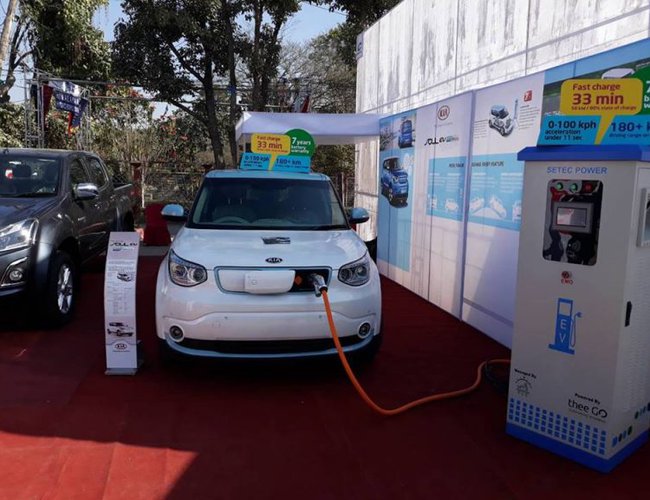
Effective transportation systems are important for national prosperity to achieve economic growth, social development and reduced environmental losses. Any sustainable transport system refers to, at minimum, accessible and affordable for the public, sound transport-related infrastructure, and use of energy-efficient automobiles, which ply through renewable energy. Going renewable, in the context of Nepal, is primarily going with hydroelectricity, for now, and foreseeable future, to ensure that our transport systems meet society's economic, social and environmental needs and longevity. Use of energy-efficient automobiles propelled by renewable energy can provide at least following five benefits: 1) Climate and environmentally friendly ambient; 2) Reduced automobiles’ pollution; 3) Saving of foreign reserves; 4) Reduced hydrocarbon dependency; 5) Self-sufficient engine of the economy. Let’s discuss these points one at a time below.
Firstly, Nepal is one of the fastest urbanizing countries in the world and the current urban population increase rate is between 5-7% every year and it is estimated that the urban population will significantly rise by 2040. As existing public transport systems are unreliable, poor and highly expensive, there has been a high surge in the number of private vehicles and more expensive public vehicles at present. There is an incredible surge in vehicle registration in all the cities of Nepal and primarily in Kathmandu Valley. Data exhibits that while there were 24,003 vehicles registered in 2000/2001, 779,822 vehicles were registered in the year 2015/2016. This shows that the number of vehicles increased variance in one and half-decade times, now every year, is more than 32 times. An increase in automobiles means not only an increase in CO2 emissions but also increase usage of hydrocarbon/dirty fuel consumption, leakage, and externalities, and mismanagement of e-wastes leading to air, water, soil and sound pollution. The CO2 emissions, leakages and externalities do not only contribute to rapid climate change but also to long-term environmental degradation reaping the multitude of health, psychosocial and economic benefits from a clean environment.
Secondly, one of the most significant problems of the 21st century is air pollution by the use of hydrocarbons for transport systems as transportation is one of the major consumers of hydrocarbon commodities. According to WHO, air pollution kills an estimated seven million people worldwide every year and 9 out of 10 people breathe air containing high levels of pollutants. Studies conducted in 2010 by Shrestha et al., demonstrated that the total CO2 emission of Kathmandu Valley alone was about 3 million tons and this is a 17-fold increase from emissions in 1990. Since 2010, emissions levels have further increased rapidly and these increases are having significant impacts on the air system, environment and whole ecosystem. Air pollution has many negative impacts on the natural environment itself, the quality of human health and overall human development processes. For example, almost 35,000 people lose their lives due to illnesses caused by air pollution and it has contributed to an estimated 9,000 premature deaths in the Kathmandu valley alone. One in 10 individuals in Kathmandu experience lung sicknesses like chronic obstructive pulmonary disease, bronchitis, and emphysema. With the expanding pace of contamination across the valley, there may come a time when one needs to forcibly place coated mask and glasses to cover the face to safeguard themselves from deadly gases and dust in the air. The message of the preceding sentences is vividly clear that reducing air pollution can save millions of lives every year and it is time we find alternative pathways to replace fossil fuels with a low carbon energy system in Nepal. Hydrocarbon steered engine of economy and transportation system emit a large volume of greenhouse gases, polluting the environment, contributing to global warming and termination of many lives on an untimely manner.
Thirdly, The existing transportation system of Nepal is run by imported hydrocarbons and the country is importing 100% of its fossil fuels. Its reliance on fossil fuel imports has been growing at an average annual growth rate of 8% since 1993. For example, the price of petroleum imports increased by 38.3% between 2071/72 (2014/15) and 2072/73 (2015/16). Seeing the amount of petrol and diesel each car consumes, the cost of money that goes out for its import is mammoth. As per the department of customs, Nepal spent NPR. 214.48 billion to import fossil fuels in the fiscal year 2018/19 while approximately NPR. 155.42 billion was spent only on petrol and diesel from the total. To avoid such a situation, one possible choice can be finding alternative energy and for now, it is the electrification of the transport system. In addition, Nepal has a comparative advantage in terms of production of hydroelectricity and it has a huge potential to replace fossil fuels with widespread hydro electrification in upcoming days. And transitioning to electric vehicles offer a dramatically lower operating cost compared to conventional internal combustion engines consuming fossil fuels. Studies show that electric vehicles are 75-80% cheaper from those that use fossil fuels and they have lower maintenance costs and cheaper to charge a battery compared to refueling a conventional liquid fuel tank. Over and above, from the robust operating cost angle, EVs also possess an inherent advantage when it comes to performance and drivability.
Fourthly, Nepal is a water-rich country, having 6000 rivers and rivulets and claimed to be able to produce about 43000 MW of electricity in the foreseeable future. Statistics exhibit that Nepal is close to producing 1850 MW of electricity in the recent future while the demand is only 1300 to 1500 MW in peak hours. According to the Nepal Electricity Authority, the electricity generation is going to increase to 2,379 MW by 2022 and 4,280 MW by 2030 in a business-as-usual scenario. In this context, the surplus electricity, if directed towards and consumed by electric vehicles, it would help in diversifying the energy mix for a transportation system, which can contribute to reducing Nepal’s fuel dependency moving from fossil fuels to clean energy (hydro) and it is homemade and relatively inexpensive. In addition to these direct benefits, there are various co-advantages, such as increased energy security and reduced emissions of greenhouse gases with an increasing diversification and use of local energy resources, decreased local pollutant emissions and reduced deaths due to pollution-induced diseases that can contribute towards meeting the broader goals of sustainable development. Just as important, EVs have the potential to unlock innovation and create new advanced industries that can spur job growth and enhance economic prosperity. With this, Nepal can start saving foreign reserves, creating jobs locally and becoming rich.
Finally, Nepal is a landlocked country or primarily India locked country in terms of access to the sea for imports and exports and any minor discomforts between the relations of the two countries have often hampered imports and exports via India. Nepal has suffered a number of times because of Indian blockades either on imports or exports, official or unofficial, and on imports, the latest incident was post-earthquake 2015 blockade which lasted for almost six months affecting Nepali social, political, economic and foreign relations. The hackneyed ‘Roti and Beti’ relation was also not helpful to loosen the Indian position on the embargo. Nepali people and economy primarily suffered at that time because of the unavailability of fossil fuels for transport, for kitchen work, for industry and for agriculture and the inalienable linkages between transportation and other aspects of lives. Therefore, investment in hydropower and electric vehicles will reap huge benefits for making Nepal self-sufficient, self-reliant and even conduct more liberated foreign relations without being worried of another embargo in the future.
In this backdrop, transitioning to a 100% renewable economy and transport system would give a lasting solution to the challenges raised by environmental degradation, climate change, energy insecurity, unsustainability, and various types of pollution. The conversion of the present transport system appears to be one of the most difficult but promising aspects of such renewable transition. Policies, inter alia, Sustainable Development Goals of Nepal 2017, Climate Change Policy 2019 and Fifteen Periodic Plan of the Government of Nepal have been consistently highlighting the transition from a high carbon economy to a green economy, which is highly appreciative tasks. However, the yearly policies and plans, for example, Budget Speech of 2077, which plays a key role in the implementation of sustainable policies of the Government of Nepal has not accommodated these genuine benefits. Instead, the tax increase policy of the electric vehicles suggests that there is no synchronized and harmonious relationship between what the government says in words and what does it do in action. While the governments (for example, Germany, UK, Dutch, India, China among others) around the world are not only reducing the tax rates on electric vehicles but also providing subsidies to encourage their citizens to switch to EVs to protect the environment and to achieve self-reliance on the renewable energy system, Nepal seems to be moving to the opposite direction by increasing the tax on electric vehicles from the budget of the year 2077. Thus, the Government of Nepal needs not only to be more considerate about investment in more hydropower generation and increase national consumption of electricity but also encourage the transition of the transport system to electric vehicles (without any prejudices or biases as public or private) for increasing national consumption of renewable electricity and even take this as an opportunity to start manufacturing of electric cars in Nepal instead of just preventing public to buy environmental-friendly vehicles.
Dr. Chandra Lal Pandey is the Program Coordinator and member of faculty at the Community Development Program, School of Arts, Kathmandu University.
Anoj Basnet is a graduate of the Department of Development Studies, Kathmandu University and he is currently working with the Lutheran World Federation Nepal.


